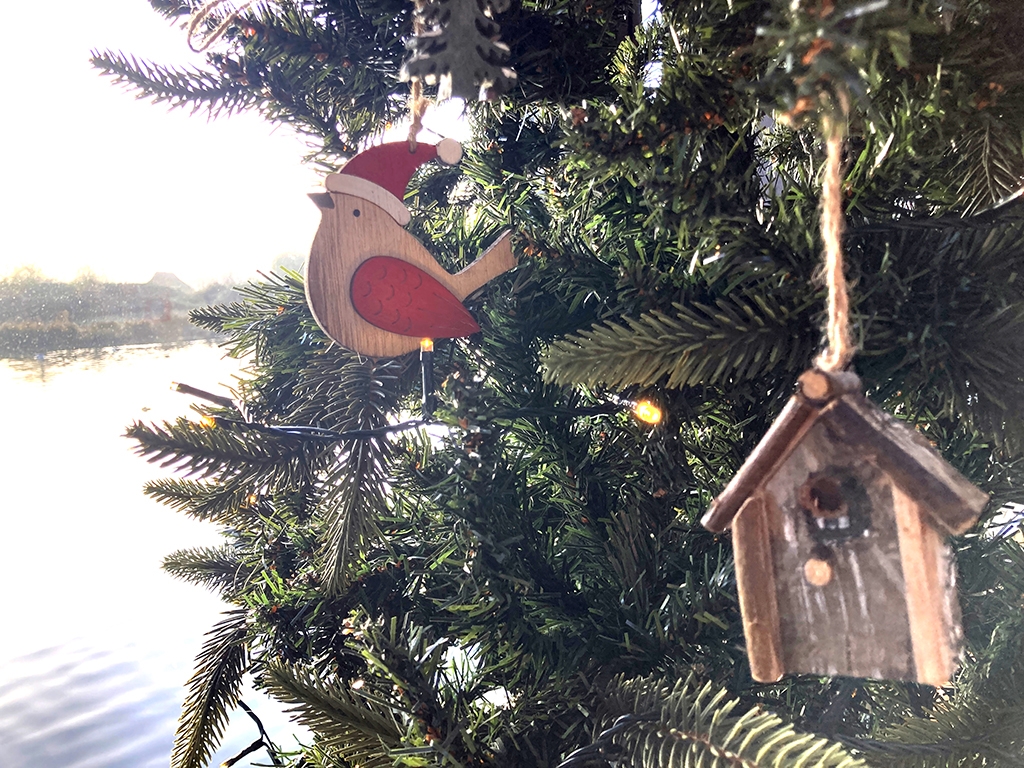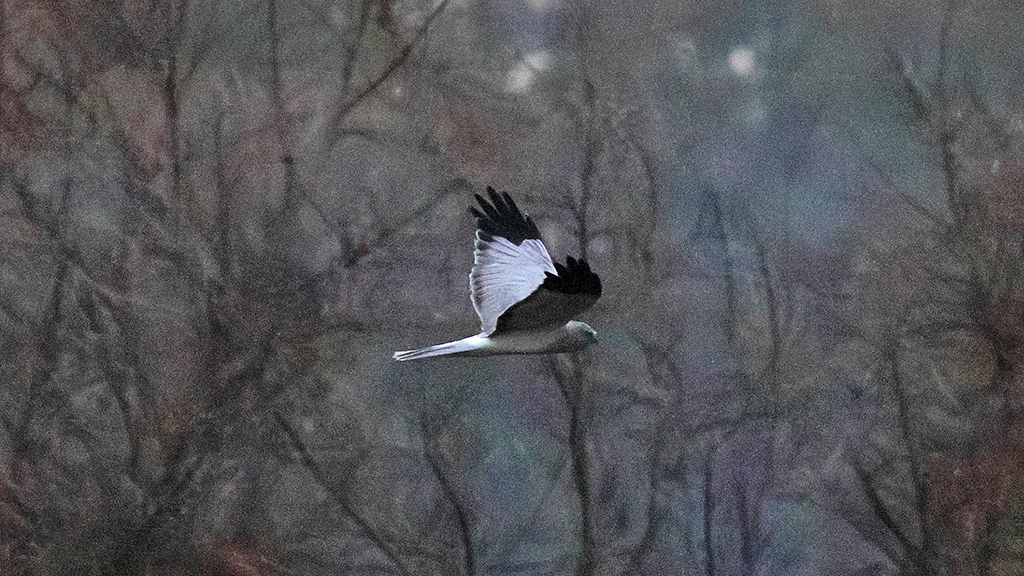Newbies and nesters in our collection

Now that breeding season is well underway this June, Head Keeper Sam McKinlay and the Collection Team of Keepers are busy keeping a watchful eye on the birds in our WWT collection of threatened and endangered birds they care for at Arundel Wetland Centre.
The Keepers are tracking all the collection birds - counting them each day and watching who is nesting and where. Some families are moved off show to our netted duckery before the ducklings or chicks hatch to keep them safe. Some birds are left to parent-rear their young while some rarer birds in breeding programs may have their eggs hand reared.
Charlie the Nene gosling
Charlie the Nene gosling was the first baby of 2023 at Arundel, hatching out on March 22. Nene geese, also known as Hawaiian geese originate in warmer climes with a breeding season that starts in February. They are the first species that our founder Sir Peter Scott bred at WWT Slimbridge and reintroduced to Hawaii, saving them from extinction.
Our Keepers moved the nene parents off show before Charlie (named in honour of our new King Charles) hatched. Then Charlie made his debut into our duckery the week of his namesake's coronation. He is now a gangly, 9 week-old teenager. Charlie and family will be released into the Reedwamp when he has grown a bit more and the threat of predators has lessened.
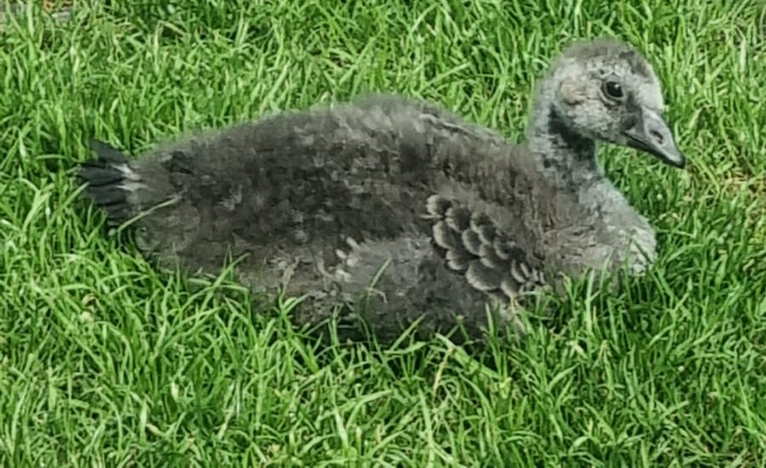
Charlie is now a 9 week old gangly teenager, with some adult feathers starting to come through the chick fluff
Who is in the duckery?
A pair of Hooded mergansers, Australian wood ducks and a pair of Philippine ducks are off show in our duckery and are on nests . These ducks will parent rear their broods in the safety of this netted outdoor 'duck nursery'. Fully grown Philippine ducks who hatched here last year will soon be on the way to our WWT Washington Wetland Centre.
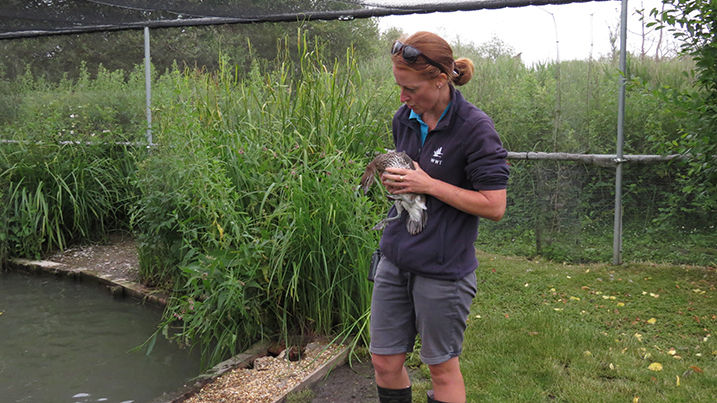
Head Keeper Sam McKinlay working in the duckery enclosure
Bewick's swans
Our pair of Bewick’s swans have built a big nest in their enclosure again this year. The pair are currently sitting on eggs which have a thirty-two day incubation period. The Keepers will be watching to see if there are cygnets hatching mid-June.
The team just finished working with contractors to remove silt from our Icelandic Lake exhibit. Now the exhibit will undergoing repairs and refurbishment. The Bewick's swan adults and any cygnets that hatch may be moved inside the protective netting of the Icelandic Lake exhibit for a few months.
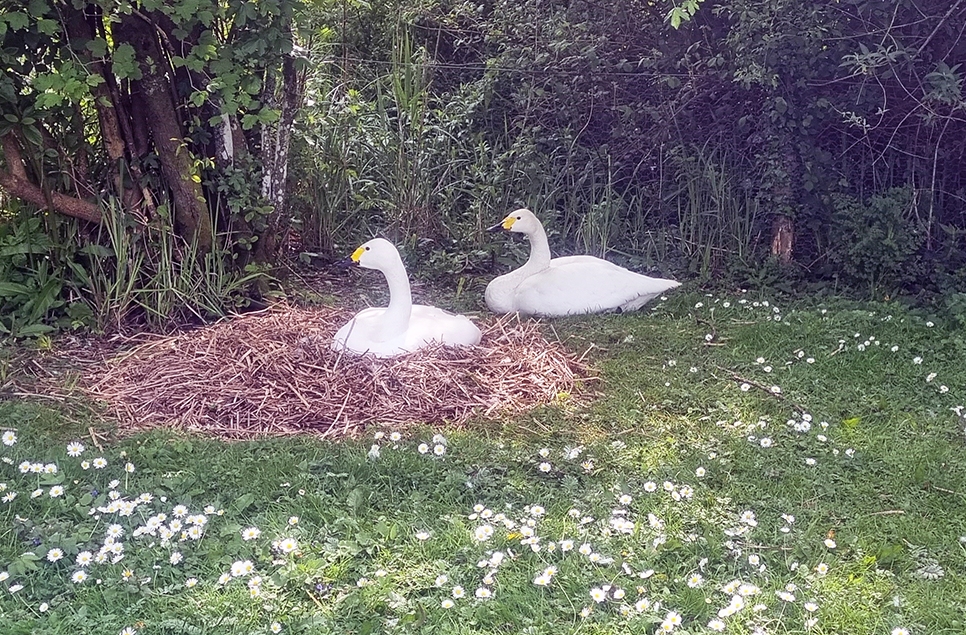
The Bewick's swan pair sitting their nest inside their enclosure
Seaducks & Waders
In the Coastal Creek aviary we expecting eggs from several of the seas ducks. The Harlequin duck have nearly finished their breeding season having started in early March. The long-tailed ducks and common scoters should nest in the green wooden nest boxes in the aviary this June and July. Directly beside the Coastal Creek aviary we are working on two off-show areas to move young families into after they hatch. The team have just completed one of these and are working on the second for the breeding sea ducks from the aviary.
Black Necked Grebes
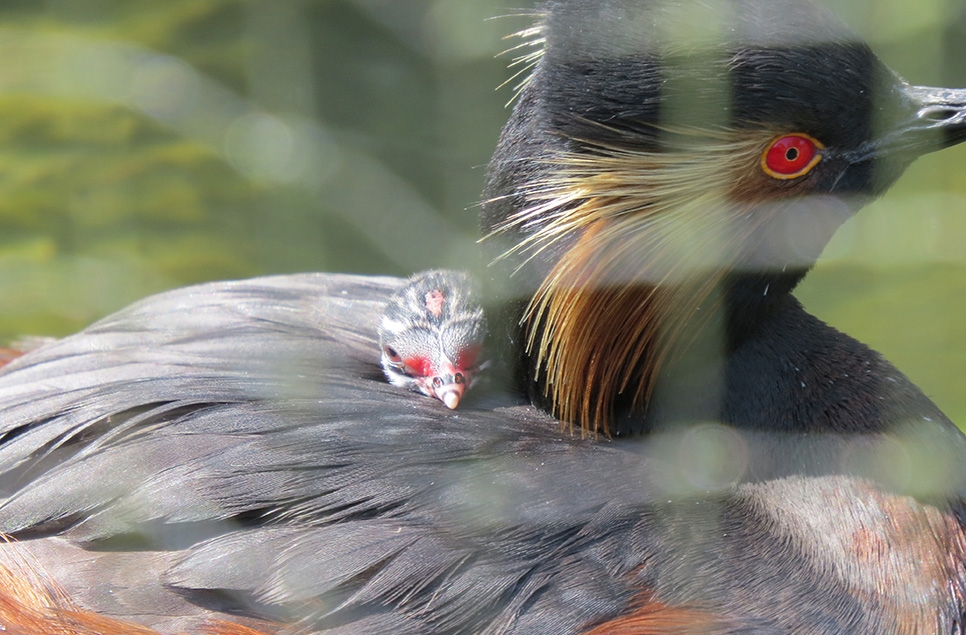
This black necked grebe hatched out this May!
Our black-necked grebes are nesting in the Waterfalls exhibit. Seven black-necked grebes chicks hatched last summer. Currently we are the only attraction to breed black-necked grebe chicks in the UK and in all of Europe. Black-necked grebes are difficult to breed in captivity. Based on our experience at Arundel WWT is leading on the publication of a ‘best practise protocol’, a guide to breeding grebes for the EAZA (European Association of Zoos & Aquaria) EEP [European Ex Situ Programme) to ensure a population of healthy birds exists for future conservation efforts.
Sam McKinlay Head Keeper at Arundel Wetland Centre says:
“Our success with these charismatic birds is down to a combination of reasons, the quality of naturally chalk-filtered water onsite, the moving water in the exhibit, good diets and our team’s careful monitoring and care of the birds and their eggs.”
There are only about 50 breeding pairs of back-necked grebes in the wild in the UK. There are about 120-130 birds wintering in the UK in coastal areas like Langstone Harbour, Poole Harbour and Fal Estuary. They are vulnerable to sea pollution.
The stunning Black-necked Grebe is one of the smallest residents at the wetland centre with adults weighing in at less than 350g. They have very sharp bills and legs placed quite far back on their bodies, allowing them to dive to catch insects and small fish.
Special treatment for some species
The eggs of some rarer ducks or those in international breeding program are placed in incubators and the youngsters reared in tanks by our Keepers. Currently this season we have White-headed duck and Harlequin eggs in the incubators.
Where will they go?
Some of the birds that hatch out this season at Arundel Wetland Centre may remain here while others may be moved to other WWT centres and zoos across the UK. Endangered species belonging to the EEP programme may even end up abroad in other countries as part of conservation programs.
